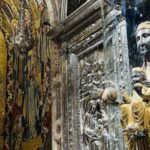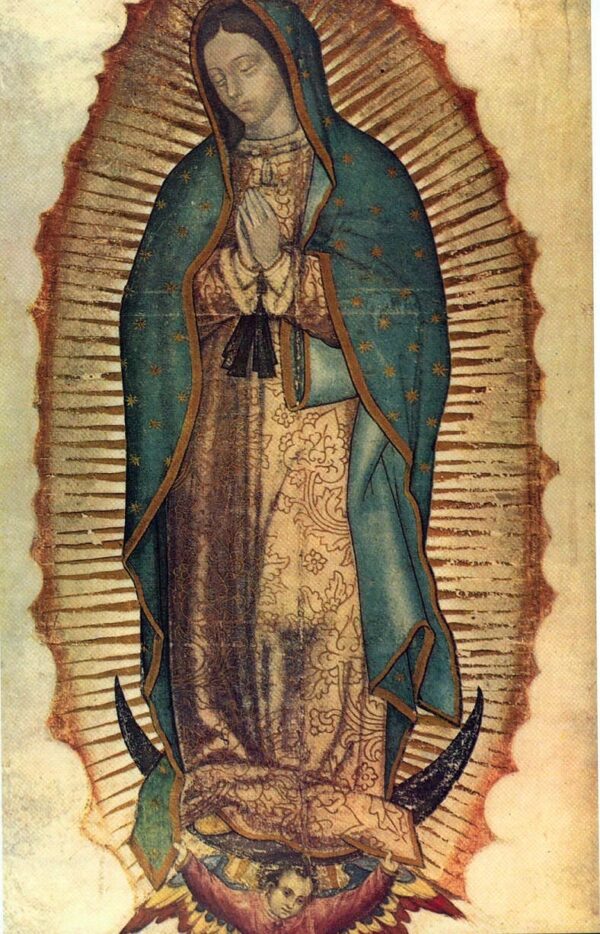
- The Cultural Significance of the Black Madonna: A Historical Perspective
- Exploring the Mystical Symbolism of the Black Madonna
- The Black Madonna in Art: Representations Across Time and Space
- Unraveling the Myths: Why the Black Madonna Captivates Millions
- The Role of the Black Madonna in Spirituality and Pilgrimage
- Discovering the Global Influence of the Black Madonna on Religion
The Black Madonna, a figure shrouded in mystery and reverence, has captivated the hearts and minds of people for centuries. Her striking presence, often depicted as a dark-skinned Virgin Mary, invites curiosity and contemplation about her origins and significance in various cultures.
In this exploration, we delve into the rich tapestry of history, art, and spirituality surrounding this enigmatic icon. Join us as we uncover the layers of meaning and devotion in The Enigma Unveiled: Exploring Why the Black Madonna is Famous, a journey that reveals her enduring allure across the globe.
The Cultural Significance of the Black Madonna: A Historical Perspective
The Black Madonna holds a profound cultural significance that transcends time and geography. Historically, this figure has been revered in various regions, often embodying the fusion of spirituality and ethnicity. For instance, in Europe, particularly in places like Barcelona, she symbolizes a connection between the divine and the marginalized, reflecting the struggles of different communities throughout the centuries.
In many cultures, the Black Madonna has been associated with fertility and protection. Her presence in churches and shrines often signifies a deep-rooted belief in her power to safeguard the faithful. This is evident in a variety of traditions, where she serves as a patroness for mothers and children, highlighting her nurturing aspects. Notable examples include:
- The Black Madonna of Montserrat in Spain, a symbol of hope for many.
- The Black Madonna of Czestochowa in Poland, revered for her miraculous interventions.
- Various depictions across Africa that celebrate her as a symbol of resilience.
Furthermore, the Black Madonna has inspired numerous artistic expressions that reflect her cultural impact. From paintings to sculptures, her image is often a focal point in religious art, inviting interpretations that resonate with diverse audiences. In summation, the historical perspective on the Black Madonna reveals her role as a unifying figure, fostering a sense of community while also challenging societal norms.
Exploring the Mystical Symbolism of the Black Madonna
The Black Madonna serves as a powerful mystical symbol, transcending mere representation to embody a rich narrative of spirituality. Her dark visage often invites interpretations rooted in various cultural contexts, suggesting a connection to the earth and the cosmos. This duality not only reflects her role as a divine mother but also emphasizes the balance of shadow and light in spiritual journeys.
Symbolically, the Black Madonna often represents transformation and healing. Her presence in religious spaces, such as churches in Barcelona, evokes a sense of safety and comfort for those seeking solace. The legend surrounding her also points to a deeper understanding of human suffering, illustrating how the divine can emerge from adversity. Key themes include:
- Feminine power: Acknowledging the strength and resilience of women throughout history.
- Unity: Bridging divides between different communities and cultures.
- Nourishment: Serving as a source of spiritual and physical sustenance.
In contemporary interpretations, the Black Madonna continues to inspire artists and spiritual seekers alike. Her image often serves as a canvas for exploring issues of identity and belonging, particularly within marginalized communities. By embracing her multifaceted symbolism, we can gain insights into the complexities of faith and the human experience, making her relevance enduring in today's world.
The Black Madonna in Art: Representations Across Time and Space
The Black Madonna has been represented in diverse artistic forms across cultures, each bringing unique interpretations to her image. From ancient sculptures to modern paintings, these representations often reflect local beliefs and historical contexts. In the realm of art, the Black Madonna serves as a compelling bridge between the sacred and the everyday, infusing spiritual significance into visual expression.
Throughout history, notable depictions of the Black Madonna can be categorized by region, showcasing her widespread influence. Key representations include:
- Spanish Black Madonna of Montserrat: A revered figure in Catalonia, known for its miraculous reputation and deep connection to the region's identity.
- Polish Black Madonna of Czestochowa: An iconic image representing Polish national pride and spirituality, often associated with miraculous events.
- African representations: Various interpretations that celebrate cultural heritage and resilience, often highlighting themes of motherhood and protection.
In addition to these well-known figures, the Black Madonna has inspired contemporary artists who explore her symbolism in new contexts. Today, her image is frequently associated with themes of empowerment and social justice, resonating with modern movements seeking to uplift marginalized voices. This evolution of her representation demonstrates the Black Madonna's adaptability, remaining relevant in discussions about spirituality and identity.
The exploration of the Black Madonna in art reveals a rich tapestry of meanings that transcend time and space. Each artistic interpretation, whether in the form of a painting in a church in Barcelona or a sculpture in a remote village, contributes to a broader understanding of her significance as a cultural and spiritual icon. As we reflect on these diverse representations, we uncover the universal themes of motherhood, strength, and resilience that the Black Madonna embodies across different cultures.
Unraveling the Myths: Why the Black Madonna Captivates Millions
Unraveling the myths surrounding the Black Madonna reveals a profound connection to the themes of identity, spirituality, and resilience. This captivating figure resonates with millions because she embodies the struggles and triumphs of various communities throughout history. In particular, her presence in cities like Barcelona serves as a reminder of the deep cultural roots intertwined with local traditions and beliefs, fostering a sense of belonging among the faithful.
Moreover, the Black Madonna's allure is enhanced by the mystical narratives that often accompany her. Legends surrounding her origin—whether relating to miraculous events or her supposed ability to heal—add layers of intrigue, inviting individuals to explore their own spiritual journeys. The blend of folklore and faith surrounding her image captures the imagination of those who encounter her, encouraging deeper contemplation about the divine.
Her inspiring presence goes beyond mere reverence; the Black Madonna serves as a symbol of feminine strength and empowerment. Many see her as a protector of the marginalized, highlighting the importance of community support and unity. This aspect of her persona resonates particularly within contemporary movements that advocate for social justice and equality, allowing her to remain a relevant figure in today’s discourse.
Ultimately, the enduring fame of the Black Madonna lies in her ability to connect with diverse audiences through shared themes of hope, healing, and solidarity. As she continues to inspire artists, spiritual seekers, and communities around the world, her story reminds us of the power of faith to transcend cultural boundaries and illuminate the human experience.
The Role of the Black Madonna in Spirituality and Pilgrimage
The Black Madonna plays a pivotal role in spirituality and pilgrimage, serving as a profound symbol of faith for countless devotees. Her veneration often inspires journeys to sacred sites where her images are housed, such as the revered Black Madonna of Montserrat in Spain. These pilgrimages not only reflect personal devotion but also foster a communal sense of belonging among the faithful, transcending individual experiences and creating a shared spiritual journey.
Pilgrims often seek the Black Madonna for her perceived ability to offer protection and healing. Many believe that her presence can transform their lives, providing solace during times of distress. In cities like Barcelona, her image is central to many rituals and celebrations, inviting worshippers to engage deeply with their spirituality while offering hopes for divine intervention and guidance.
The Black Madonna also embodies a connection to the feminine divine, representing strength, resilience, and nurturing qualities. This aspect attracts a diverse array of followers, including women who seek empowerment through her narrative. Pilgrims often reflect on their own life experiences, resonating with her story of suffering and triumph, thus enriching their spiritual journeys and reinforcing their communal bonds.
As a focal point for both local and international pilgrims, the Black Madonna serves as a bridge between the sacred and the everyday. Her significance is evident in the rituals, art, and stories that surround her, which further enhance the spiritual landscape of places like Barcelona. Through these connections, she continues to inspire and uplift, remaining a vital part of the spiritual tapestry of many cultures around the world.
Discovering the Global Influence of the Black Madonna on Religion
The Black Madonna's influence extends far beyond individual cultures, weaving a rich narrative that spans continents. Her imagery resonates deeply in various religious practices, often representing a convergence of faith and social justice. This global presence is particularly evident in regions such as Eastern Europe, Latin America, and Africa, where she is venerated not only as a spiritual figure but also as a symbol of resilience and strength for marginalized communities.
Across the globe, the Black Madonna inspires various spiritual movements, which can be categorized as follows:
- Local Devotion: In places like Barcelona, her image attracts pilgrims seeking miracles and healing.
- Cultural Identity: Many communities identify her as a protector of their heritage, especially in Poland and Italy.
- Intersectionality: Her representation often intersects with issues of race, gender, and class, making her a figure of empowerment.
Moreover, the Black Madonna's role in spirituality often transcends traditional religious boundaries. She inspires artistic expressions that reflect contemporary spiritual needs, encouraging a dialogue between the past and present. This adaptability has allowed her to remain relevant, serving as a beacon of hope for those grappling with modern societal challenges.
As diverse communities continue to embrace the Black Madonna, her global influence signifies a collective search for meaning and connection. By exploring her veneration, we uncover not only the complexities of faith but also the shared human experience that unites us all. This multifaceted representation highlights her importance as a spiritual icon in an increasingly interconnected world.
 The Mystique Behind the Black Lady of Montserrat: Unraveling the Enigma
The Mystique Behind the Black Lady of Montserrat: Unraveling the Enigma Why Should I Go to Montserrat? Discover the Enchanting Beauty of Barcelona's Majestic Mountain
Why Should I Go to Montserrat? Discover the Enchanting Beauty of Barcelona's Majestic Mountain Transportation in Barcelona
Transportation in BarcelonaIf you want to know other articles similar to The Enigma Unveiled: Exploring Why the Black Madonna is Famous you can visit the category WHERE YOU CAN GO.
Deja una respuesta










Read more!